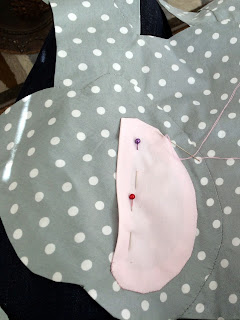I am in the middle of a massive post about my quilt project but in the interim I thought I'd mention this DIY I did this bank holiday weekend.
We bought this great old Dutch (?) map when we were living in Crystal Palace last year. As far I can tell it's a map of textile and petro-chemical industry over Europe - just what every home needs! Anyway, it's great and we love it but its about 1m x 1.5m and quite heavy paper and displaying it is a bit of a challenge.
We moved house about a year ago and I'm ashamed to say that this has just been rolled up in the spare room while I figured out how to hang it. I'd ruled out conventional framing as it would cost a fortune and make it difficult to transport. I had seen the hanging systems of basically a rod at the top and bottom to weigh it/stretch it out and wanted to have a go at doing something similar myself.
So to do this I needed the following:
- 2 lengths of wood measuring 110cm each (I wanted a small amount of overhang as the map is 103cm)
- matt varnish and brush)
- small hooks
- 4 bulldog clips
- picture wire
(side note: buying the wood was a full on nightmare here in London. I have no idea why. Numerous DIY shops either didn't have wooden dowels or lengths of wood over a metre. I finally bought 2 mop handles and a saw to saw them down to size!)
1. So the first thing I did was saw my bits of wood to size and sand down any ragged edges. If you are luckier than me in terms of suppliers of bits of wood in your local area maybe you can skip this bit. (On the up-side I now have a saw which makes me feel very capable.)
2. Next, varnish the wood. I just used a matt varnish so the wood didn't look so raw. But you could use a stain if you wanted the wood a specific colour or finish. Make sure you wait for it to dry.
3. Figure out where you want the bulldog clips - I wanted them right on the edge of the map to minimise the corner curls. Once the clips are in position line up the holes with where the hooks will need to be on the wood and make a little mark. Do this for both the top and bottom pole.
 4. Screw in the hooks. I used a hammer and a small nail to start off the hole and make sure that the hook would screw in straight.
4. Screw in the hooks. I used a hammer and a small nail to start off the hole and make sure that the hook would screw in straight.

5. I screwed 2 eyelets onto the opposite side of the pole to the hooks to attach the picture wire to the top pole. I kept the wire fairly tight as the poster is so big but it can be made more slack to adjust the distance from the nail/hook.
 6. Finally, hook the hooks through the holes in the bulldog clips. The good thing about this is if your hooks aren't perfectly placed you can shift the clips up and down to adjust them. I hung the top pole with the map attached and finally hung the bottom pole off the bottom clips.
6. Finally, hook the hooks through the holes in the bulldog clips. The good thing about this is if your hooks aren't perfectly placed you can shift the clips up and down to adjust them. I hung the top pole with the map attached and finally hung the bottom pole off the bottom clips.
Done!
I'm really pleased with how this turned out. And best of all once I had got all the stuff together it only took a couple of hours to finish.
I'd recommend this as an easy, cheap way to display a large piece like this. Just bear in mind the weight of the paper - this is very heavy duty. I'd worry about a thin piece possibly perishing under the weight of the bottom pole.
I'm happy that this map is finally out of its packaging and on display.
Now back to the quilt....more on that soon.



















































